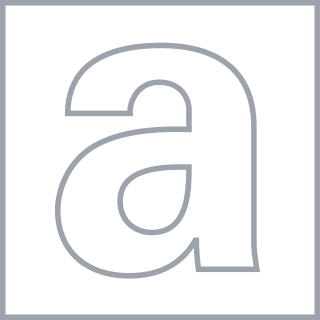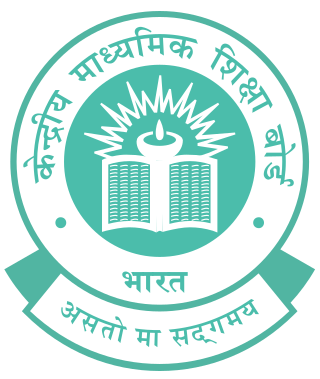
The General Certificate of Secondary Education (GCSE) is an academic qualification in a range of particular subjects, taken in England, Wales, and Northern Ireland. State schools in Scotland use the Scottish Qualifications Certificate instead. Private schools in Scotland may choose to use GCSEs from England.
The Leaving Certificate Examination, commonly referred to as the Leaving Cert or (informally) the Leaving, is the final exam of the Irish secondary school system and the university matriculation examination in Ireland. It takes a minimum of two years' preparation, but an optional Transition Year means that for those students it takes place three years after the Junior Cycle examination. These years are referred to collectively as "The Senior Cycle". Most students taking the examination are aged 16–19; in excess of eighty percent of this group undertake the exam. The Examination is overseen by the State Examinations Commission. The Leaving Certificate Examinations are taken annually by approximately 60,000 students.

Matriculation is the formal process of entering a university, or of becoming eligible to enter by fulfilling certain academic requirements such as a matriculation examination.
In the Scottish secondary education system, the Higher is one of the national school-leaving certificate exams and university entrance qualifications of the Scottish Qualifications Certificate (SQC) offered by the Scottish Qualifications Authority. It superseded the old Higher Grade on the Scottish Certificate of Education (SCE). Both are normally referred to simply as "Highers".

The Hong Kong Certificate of Education Examination was a standardised examination between 1974 and 2011 after most local students' five-year secondary education, conducted by the Hong Kong Examinations and Assessment Authority (HKEAA), awarding the Hong Kong Certificate of Education secondary school leaving qualification. The examination has been discontinued in 2012 and its roles are now replaced by the Hong Kong Diploma of Secondary Education as part of educational reforms in Hong Kong. It was considered as the equivalent of the GCSE in the United Kingdom.

The Sijil Pelajaran Malaysia (SPM), or the Malaysian Certificate of Education, is a national examination sat for by all fifth-form secondary school students in Malaysia. It is the equivalent of the General Certificate of Secondary Education (GCSE) of England, Wales and Northern Ireland; the Nationals 4/5 of Scotland; and the GCE Ordinary Level of the Commonwealth of Nations. It is the leaving examination of the eleventh grade of schooling.

Budhanilkantha School, often referred to as BNKS, is a competitive non-profit boarding school in Nepal. It is located in Narayanthan, 8 kilometres north of Kathmandu, at the foothills of Shivapuri mountain (2,732 m [8,963 ft]). It is named after the Budhanilkantha Temple, which is located nearby.

The educational system in Nepal was long based on home-schooling and gurukulas. This was similar to the former Indian system of education, in which the pupils would learn either in their homes or with reputed priests or Gurus. Before Nepal was declared a democratic country, the general public had no access to formal education. The first formal school, Durbar High School, established by Jung Bahadur Rana in 1854, was intended for the elite. The birth of Nepalese democracy in 1951 opened its classrooms to a more diverse population. Education in Nepal from the primary school to the university level has been modeled from the very inception on the Indian system, which is in turn the legacy of the old British Raj.
In India, board examinations refer to the public examinations that are conducted at the end of the completion of Secondary and Senior secondary Education .The class 10 Board Exam are conducted by State Board, Central Board of Secondary Education And Council for the Indian School Certificate Examinations .The class 10 th exam is important for continue of Secondary Education.After Completion class X exam the Student persuade in different stream such as Science Commerce and Arts ( Humanities).The Class 12 Board Exam are conducted by State Board (HSC), Central Board of Secondary Education (AISSCE) And Council for the Indian School Certificate Examinations ( ISC). The scores achieved in XII exams are considered very important for getting into universities, professional courses or training programmes and other occupations Such as getting in Major Public / Private University(College) or Institute of national importance Such as AIIMS, NIT,IIT, IIIT And IIM.Due to the implementation of NEP 2020 the board exam would be conducted Twice in a year just like in academic year 2021-22 it would be implemented in Next Academic year 2024-25.
West Bengal Joint Entrance Examination or the WBJEE is a state-government controlled centralised test, conducted by the West Bengal Joint Entrance Examinations Board for admission to many private and governmental engineering institutions in West Bengal.
In the Indian education system of some Indian states, the Pre-University Course (PUC) or Pre-Degree Course (PDC) is referred to as Intermediate or +2 Course, which is an two-year senior secondary education course that succeeds the tenth grade and precedes to the completion of an Senior Secondary Course. The First Year of the PUC is commonly referred to as 1st PUC or Class 11th,, and the Second Year of the PUC as 2nd PUC or Class 12th. A college which offers the PUC is simply known as a 'PU college' or 'Intermediate College' which is also referred to as junior college.

The A-level is a subject-based qualification conferred as part of the General Certificate of Education, as well as a school leaving qualification offered by the educational bodies in the United Kingdom and the educational authorities of British Crown dependencies to students completing secondary or pre-university education. They were introduced in England and Wales in 1951 to replace the Higher School Certificate. The A-level permits students to have potential access to university if their grade is of satisfactory quality.
In South Africa, matriculation is the final year of high school and the qualification received on graduating from high school, and the minimum university entrance requirements. The first formal examination was conducted in South Africa under the University of the Cape of Good Hope in 1858. In general usage, the school-leaving exams, which are government-administered, are known as the "matric exams"; by extension, students in the final year of high school are known as "matriculants" or, more commonly, "matrics". Once the Matric year has been passed, students are said to have "matriculated". See List of secondary education systems by country § South Africa.
The General Certificate of Education (GCE) Advanced Level, or A Level, is a main school leaving qualification in England, Wales, Northern Ireland, the Channel Islands and the Isle of Man. It is available as an alternative qualification in other countries.

The Central Board of Secondary Education (CBSE) is a national level board of education in India for public and private schools, controlled and managed by the Government of India. Established in 1929 by a resolution of the government, the Board was an experiment towards inter-state integration and cooperation in the sphere of secondary education. There are more than 27,000 schools in India and 240 schools in 28 foreign countries affiliated to the CBSE. All schools affiliated to CBSE follow the NCERT curriculum especially from class 9 to 12. The current Chairperson of CBSE is Nidhi Chibber, IAS.
Premier Secondary School is a boarding school in Rajbiraj, Nepal. The school was established in 1998. The founder of the school is Rajesh Karna. The school has around 500 students. It is one of the school who produces reasonable percentage of results in School Leaving Certificate exams. Abhishek Shrivastav from the school topped Saptari district in SLC 2072 BS and get awarded by PABSON. The school provides qualitative education to all the studying students.
The Junior Cycle is the first stage of the education programme for post-primary education within the Republic of Ireland. It is overseen by the Department of Education and the National Council for Curriculum and Assessment (NCCA), and its terminal examination, the Junior Certificate, by the State Examinations Commission.
The Secondary Education Examination (SEE) is the final examination in the secondary school system of Nepal which is being taken by National Examination Board. National Examination Board upgraded from what was previously known as School Leaving Certificate (SLC).
In Nigeria, the academic grading system scales from A to F (fail). Below is the grading system of Nigerian schools.







